Data types in Java are divided into reference types and basic data types. Basic types are divided into 8 types. Today I will introduce these 8 basic data types to you:

1. Integer type
Integer types include byte, short, int, and long, all of which are signed (complement) integers (that is, they can represent negative numbers).
Integer literals (127-128) default to int type, if Without exceeding the scope of the declared type, you can directly assign a small type (you don’t need to memorize it, you will gradually understand it in the process of writing the program). (Recommended learning: Java Video Tutorial)
When using integer types, pay attention to the value range. Integer literals between (-128~127) can be directly assigned to the byte type, and Java will The sign bit is automatically processed. Similarly, the short type is the same (rarely used).
Java underlying byte and short are calculated as 32 bits (note that the int type range is also 32 bits).
Note: Long type literals need to use "L", "l" suffixes, otherwise the compilation will not pass. Note that as shown below, because the default literal of an integer value is of type int, 12123123123 is obviously beyond the range of int, so a compilation error will occur. However, if the suffix "L" is added after it, it means that the number is of type long.
2. Floating point type
A data type used to represent decimals. Principles of floating point numbers: binary scientific notation.
Scientific notation for decimal floating point numbers: 219345=2.19345*(10^5)
Scientific notation for binary floating point numbers: 10111=1.0111*(2^100)
Take 2.19345* (10^5) as an example to introduce the following concepts:
Mantissa: .19345
Exponent: 5
Base: 10
The float type has a total of 32 bits (same as int), of which 1 bit is the sign bit, the exponent is 8 bits, and the mantissa is 23 bits. It should be emphasized that the precision of float is 23 digits (that is, it can accurately express 23 digits, and it will be truncated if it exceeds).
The small tree uses the length of the mantissa to express the accuracy. For example, pi=3.14, its accuracy is 2 digits, and pi=3.1415, its accuracy is 4 digits.
What is interesting is that the precision of int is greater than that of float, because the precision of int is 31 bits, which is greater than float.
Because the float type has low precision, we generally use the double type more often.
The double type can represent 64 bits, including 1 sign bit, 11 bits of exponent, and 52 bits of mantissa (you don’t need to remember the storage format, it is enough to know that generally decimals are represented by double).
The precision of double is more accurate than int, and the range it can represent is larger than float, but not as good as long.
It should be noted that the literal value of floating point number is double by default.
3. Character type char
The character type is a 16-bit unsigned integer, which is a binary number. This value is the Unicode encoding value of a character.
What is the encoding? We cannot write words in a computer and can only use 0 and 1 to represent numbers. So we have made artificial regulations. In addition to representing a number, a certain number can also be expressed as a character. The character represented by a decimal number 65 is the capital letter A
. All of this is to display and output according to human habits as much as possible. Inside the computer, 0 and 1 are always stored and operated.
The char type is an unsigned 16-bit integer. The minimum value is 0 and the maximum value is 65535=2^16-1. When assigning a character in the program, use single quotes for character literals, which can be char Assigned values include characters, numbers, and symbols.
It should be noted that not all characters are visible, such as /u0000, which is generally used as the end character of a string in C, not "0", as shown below, the small box displayed on the console represents Characters are not visible.
4.boolean Boolean type
Expression: true (true)/false (false).
Generally used in judgment statement blocks:
public class demo{
boolean b=false;
if(b==true){
System.out.println("回家睡觉");
}else{
System.out.println("熬夜加班");
}
}
For more Java-related technical articles, please visit the Java Development Tutorial column to learn!
The above is the detailed content of Java's eight basic data types. For more information, please follow other related articles on the PHP Chinese website!
 基本数据类型都有什么特点Nov 10, 2023 pm 01:52 PM
基本数据类型都有什么特点Nov 10, 2023 pm 01:52 PM基本数据类型都有固定大小、固定的取值范围、不可变性、直接访问内存、默认值、运算规则、占用的存储空间、速度、特殊函数和转换等特点。详细介绍:1、固定大小,基本数据类型在声明时具有固定的大小,意味着在任何情况下,每个基本数据类型的存储空间都是相同的,不会因为变量的值而改变;2、固定的取值范围,每种基本数据类型都有固定的取值范围;3、不可变性,基本数据类型是不可变的等等。
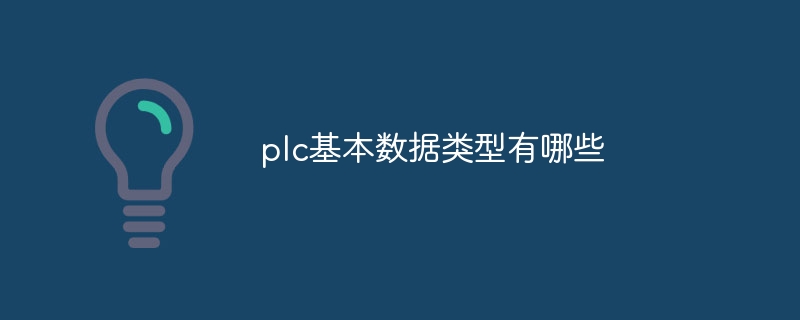 plc基本数据类型有哪些Nov 02, 2023 am 10:40 AM
plc基本数据类型有哪些Nov 02, 2023 am 10:40 AMplc基本数据类型有位、字节、整数、浮点数、字符串、布尔、时间、计数器、定时器等。详细介绍:1、位(Bit):表示一个开关状态,可以是0或1;2、字节(Byte):表示8个位的数据,可以存储整数值(0-255)或字符;3、整数(Integer):表示有符号的整数值,可以是正数、负数或零;4、浮点数(Float):表示带有小数部分的实数值,可是单精度(32位)或双精度(64位)等
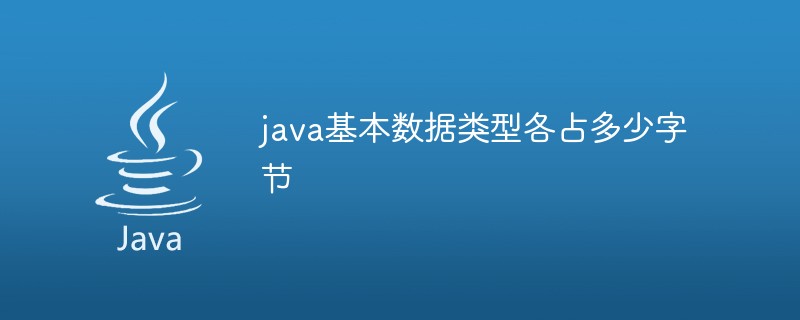 java基本数据类型各占多少字节Aug 17, 2020 am 10:59 AM
java基本数据类型各占多少字节Aug 17, 2020 am 10:59 AMJava一共有8种基本数据类型:1、int占4字节,取值范围为“-2147483648~2147483647”;2、short占2字节,取值范围为“-32768~32767”;3、long占8字节;4、byte占1字节,取值范围为“-128~127”;5、float是单浮点类型,占4字节;6、double是双浮点类型,占8字节;7、char占2字节;8、boolean占1字节。
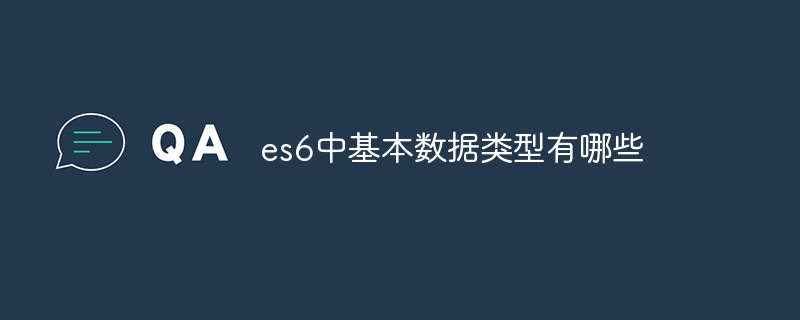 es6中基本数据类型有哪些Nov 07, 2023 am 10:12 AM
es6中基本数据类型有哪些Nov 07, 2023 am 10:12 AMes6中基本数据类型有“Number”、“String”、“Boolean”、“Symbol”、“null”和“undefined”六种类型:1、,包括整数和浮点数,用于表示数值;2、String,用于表示文本数据;3、Boolean,表示逻辑上的真或假;4、Symbol,用于对象属性的唯一标识符;5、null,表示一个空值或不存在的对象;6、undefined。
 redis基本数据类型有哪些Dec 18, 2023 pm 02:47 PM
redis基本数据类型有哪些Dec 18, 2023 pm 02:47 PMredis基本数据类型有:1、String;2、List;3、Set;4、Hash;5、Sorted Set。详细介绍:1、String,这是Redis最基本的数据类型,可以存储任何类型的数据,包括字符串、数字和二进制数据等;2、List,是一种有序的字符串列表,可以在头部或尾部添加元素;3、Set,是一组无序、唯一的字符串集合,可以对集合进行并、交、差等集合运算等等。
 常用基本数据类型有哪些Nov 02, 2023 am 11:53 AM
常用基本数据类型有哪些Nov 02, 2023 am 11:53 AM常用基本数据类型有整型、浮点型、布尔型、字符型、字符串、null、枚举、结构体、联合和指针等。详细介绍:1、整型,用于存储整数数值,有符号和无符号两种类型;2、浮点型,用于存储具有小数部分的数值,分为单精度和双精度两种类型;3、布尔型,用于存储逻辑值,即真或假;4、字符型,用于存储单个字符或字母;5、字符串,用于存储文本数据或字符序列;6、空值或null,表示没有值等等。
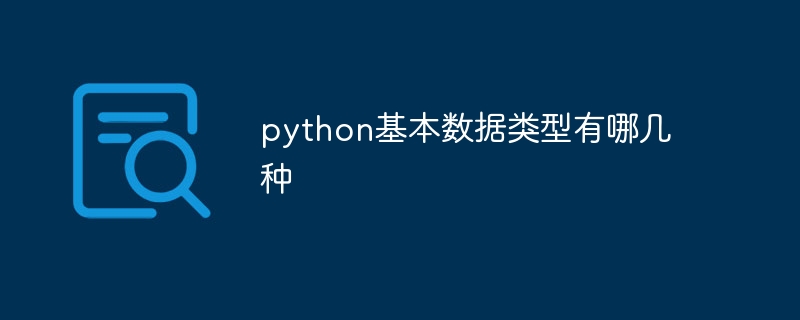 python基本数据类型有哪几种Dec 11, 2023 pm 04:08 PM
python基本数据类型有哪几种Dec 11, 2023 pm 04:08 PMpython基本数据类型有七种,详细介绍:1、数字,Python支持几种类型的数字,包括整数、浮点数、复数和布尔值;2、字符串,是由零个或多个字符组成的有序字符序列,在Python中,字符串是不可变的,这意味着不能更改字符串中的字符;3、列表,是Python中的可变数据类型,可以包含任意数量和类型的对象,列表是有序的,并且可以包含重复的元素;4、元组,与列表类似等等。
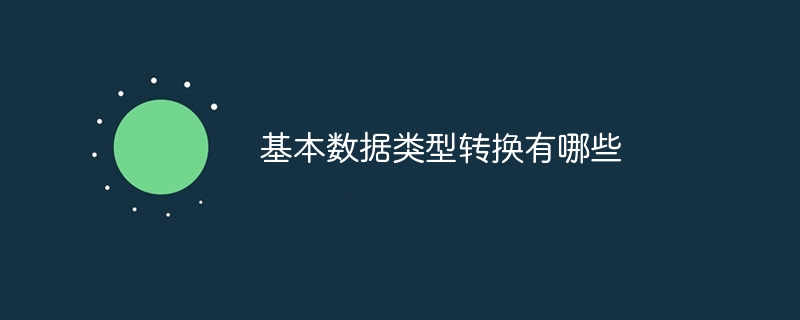 基本数据类型转换有哪些Nov 02, 2023 pm 01:52 PM
基本数据类型转换有哪些Nov 02, 2023 pm 01:52 PM基本数据类型转换有隐式类型转换和显示类型转换。详细介绍:1、隐式类型转换,这种转换在编程语言中自动进行,不需要显式地指定类型转换,当一个整数与一个浮点数进行运算时,整数会被自动转换为浮点数,以便进行浮点数运算;2、显式类型转换,这种转换需要程序员显式地指定数据类型的转换,在C语言中,可以使用强制类型转换运算符进行显式类型转换。不同的编程语言可能具有不同的类型转换规则和语法。


Hot AI Tools

Undresser.AI Undress
AI-powered app for creating realistic nude photos

AI Clothes Remover
Online AI tool for removing clothes from photos.

Undress AI Tool
Undress images for free

Clothoff.io
AI clothes remover

AI Hentai Generator
Generate AI Hentai for free.

Hot Article

Hot Tools

EditPlus Chinese cracked version
Small size, syntax highlighting, does not support code prompt function

Safe Exam Browser
Safe Exam Browser is a secure browser environment for taking online exams securely. This software turns any computer into a secure workstation. It controls access to any utility and prevents students from using unauthorized resources.

MantisBT
Mantis is an easy-to-deploy web-based defect tracking tool designed to aid in product defect tracking. It requires PHP, MySQL and a web server. Check out our demo and hosting services.

SublimeText3 English version
Recommended: Win version, supports code prompts!

SublimeText3 Mac version
God-level code editing software (SublimeText3)






